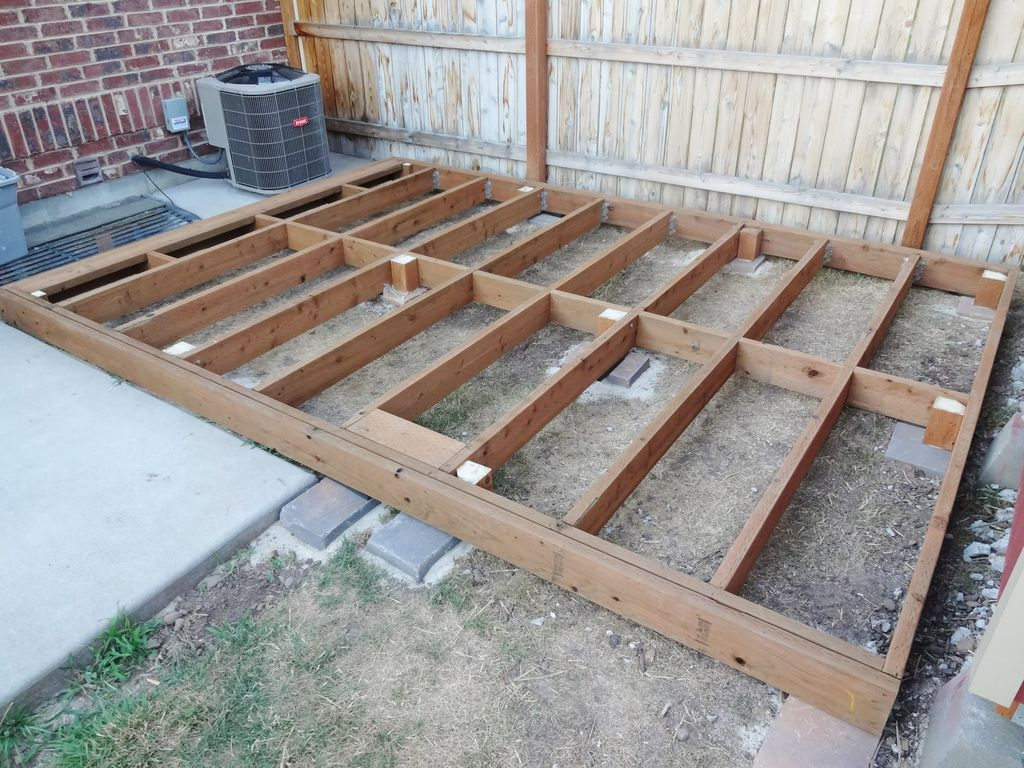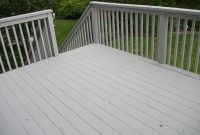 Build A Floating Deck intended for proportions 1024 X 768
Build A Floating Deck intended for proportions 1024 X 768How to Build a 12×12 Floating Deck: A Step-by-Step Guide
Creating Your Perfect Outdoor Oasis
12×12 Floating Deck Plans – Imagine stepping out of your home into a beautiful, inviting space where you can relax, entertain, and soak up the sunshine. A 12×12 floating deck can make this dream a reality, providing a versatile and cost-effective outdoor oasis. Whether you’re a seasoned DIY enthusiast or a beginner looking for a fun project, building a floating deck is within your reach. In this comprehensive guide, we’ll walk you through the process, from understanding a floating deck to the step-by-step instructions for building your own. Let’s dive in!
What is a Floating Deck?
Before diving into the details, let’s start with the basics. A floating deck, also known as a freestanding or ground-level deck, is a deck that is not attached to a building. It “floats” above the ground, resting on concrete deck blocks or piers. This type of deck is incredibly versatile as it can be built anywhere in your yard, even on uneven ground.
The main advantage of a floating deck is its simplicity and flexibility. Unlike traditional decks requiring complex foundations and permits, a floating deck eliminates the need for digging post holes or pouring concrete footings. It can be built relatively quickly and easily, making it a popular choice for DIY enthusiasts.
Why Build a 12×12 Floating Deck?
Now that we understand the concept of a floating deck let’s explore why a 12×12 size might be the perfect fit for your outdoor space. A 12×12 floating deck offers several benefits, making it an attractive option for homeowners.
First and foremost, the size of a 12×12 deck provides ample space for various outdoor activities. Whether you envision hosting barbecues, lounging with a book, or creating a play area for children, this deck size offers versatility and room for customization.
Another advantage of a 12×12 floating deck is its cost-effectiveness. Compared to larger tiers, the materials required for a 12×12 size are more affordable and accessible. The construction process is generally faster and requires fewer resources, reducing time and labor costs.
Lastly, a 12×12 floating deck is perfect for smaller yards or areas with limited space. It allows you to maximize your outdoor area while still enjoying the benefits of having a dedicated space for relaxation and entertainment.
Who Can Build a 12×12 Floating Deck?
The beauty of a 12×12 floating deck is that anyone can build it, regardless of their skill level or experience with DIY projects. With the right tools, materials, and guidance, you can complete this project and enjoy creating something with your hands.
Whether you’re an experienced builder or a novice, take the time to research and familiarize yourself with the process. Following a step-by-step guide and taking necessary safety precautions, you can build a sturdy and functional floating deck to enhance your outdoor living space.
When Is the Best Time to Build a Floating Deck?
Planning the timing of your floating deck construction is crucial for a smooth and enjoyable building experience. Consider two primary factors when determining the best time to build your deck: weather conditions and schedule.
Ideally, choose a time when the weather is dry and mild. Rainy or scorching weather can disrupt the construction process and compromise the quality of your deck. Spring and fall are generally favorable seasons for deck building, as they offer moderate temperatures and less chance of precipitation.
Additionally, evaluate your schedule and allocate enough time to complete the project without rushing. Building a floating deck requires patience and attention to detail, so ensure you have sufficient time to devote to the construction process.
Which Materials Are Best for a 12×12 Floating Deck?
Suitable materials are crucial for building a sturdy, long-lasting 12×12 floating deck. Here are the essential materials you’ll need:
- Pressure-treated lumber: Opt for pressure-treated wood, such as cedar or redwood, as it offers durability and resistance to rot and insect damage.
- Concrete deck blocks or piers: These provide a stable foundation for your deck. Make sure to choose blocks or ports that are designed for ground-level decks.
- Galvanized deck screws: Use corrosion-resistant screws to secure the deck boards and frame. These screws are specifically designed for outdoor use and will withstand the elements.
- Gravel or landscape fabric: Use gravel as a base for your deck blocks or piers to improve stability. Landscape fabric can be placed beneath the gravel to prevent weed growth.
- Optional materials: Depending on your design preferences, you may need additional materials such as joist hangers, post anchors, or decorative elements like railings and stairs.
Remember to consult with your local building codes and regulations to ensure compliance with any specific requirements or restrictions regarding materials or deck construction.
How to Build a 12×12 Floating Deck: A Step-by-Step Guide
Now that we’ve covered the essential groundwork, it’s time to dive into the step-by-step process of building a 12×12 floating deck. Follow these instructions carefully, and you’ll be well on your way to creating a beautiful outdoor space:
Step 1: Gather Your Tools and Materials
Before starting the construction process, gather all the necessary tools and materials. This may include a circular saw, drill, tape measure, level, shovel, safety goggles, and work gloves. Double-check that you have everything you need to avoid interruptions during the building process.
Step 2: Prepare the Site
Clear the area where you plan to build the deck. Remove any vegetation, rocks, or debris from the site. Use a level to ensure the ground is relatively even, making necessary adjustments.
Step 3: Lay the Foundation
Place concrete deck blocks or piers in a grid pattern, spaced according to your deck design. Ensure they are level and properly aligned. Use gravel as a base and landscape fabric to prevent weed growth.
Step 4: Build the Frame
Measure and cut pressure-treated lumber to create the frame for your deck. Lay the outer edge first, securing the corners with galvanized deck screws. Then, add joists at regular intervals, ensuring they are level and securely attached to the outer edge.
Step 5: Install the Deck Boards
Place the deck boards across the frame, leaving a small gap between each panel for water drainage. Secure the panels to the frame using galvanized deck screws, ensuring they are evenly spaced and aligned.
Step 6: Add Finishing Touches
You can customize your deck with additional features like railings, stairs, or decorative elements if desired. Follow the manufacturer’s instructions to install these components correctly.
Step 7: Perform a Final Inspection
Once the construction is complete, carefully inspect your deck for any loose screws, uneven boards, or potential safety hazards. Make necessary adjustments or improvements to ensure the deck is safe and structurally sound.
Whose Help Do You Need for Building a Floating Deck?
While building a 12×12 floating deck can be a rewarding DIY project, evaluating whether you require additional help or resources is essential. Depending on your comfort level, expertise, and available time, you may seek professional assistance or enlist the support of friends and family.
Hiring a contractor can save you time and provide peace of mind, especially if you lack experience or have a busy schedule. Contractors can handle the entire construction process, from obtaining necessary permits to executing the project precisely.
On the other hand, if you enjoy hands-on projects and have the time and motivation to learn, building the deck yourself can be a gratifying experience. Involve friends or family members willing to assist, ensuring you have the necessary workforce and expertise.
Tips for Designing a Distinct, High-Value 12×12 Floating Deck
Now that you’ve mastered the basics of building a 12×12 floating deck, let’s explore some creative tips for designing a deck that genuinely stands out:
- Consider your lifestyle: Tailor your deck design to accommodate your specific needs and interests. If you enjoy hosting gatherings, allocate space for outdoor seating and a dining area. If relaxation is your priority, incorporate comfortable lounge chairs or hammocks.
- Blend with the surroundings: Use natural materials and colors harmonizing with your backyard landscape. Consider the architectural style of your home and choose design elements that complement it.
- Add lighting: Illuminate your deck with strategically placed outdoor lighting. It enhances safety and creates a cozy atmosphere for evening gatherings.
- Include shade options: Incorporate shade structures such as pergolas, umbrellas, or retractable awnings to provide relief from the sun during hot summer days.
- Think beyond the deck: Extend your design beyond the deck itself. Add built-in planters, a fire pit, or a water feature to enhance the overall ambiance.
Your Dream Deck Awaits!
Congratulations! You’ve reached the end of our comprehensive guide on how to build a 12×12 floating deck. We’ve explored the advantages of a floating deck, discussed the best materials, and provided you with a step-by-step construction guide. Now it’s time to put your newfound knowledge into action and create the outdoor oasis you’ve always desired.
Whether you’re looking to expand your living space, increase your property value, or enjoy the beauty of the great outdoors, building a 12×12 floating deck is an excellent choice. With careful planning, proper materials, and a little elbow grease, you’ll soon enjoy your balcony, basking in the sun and making memories with family and friends. So, go ahead and take the plunge—your dream deck awaits!



